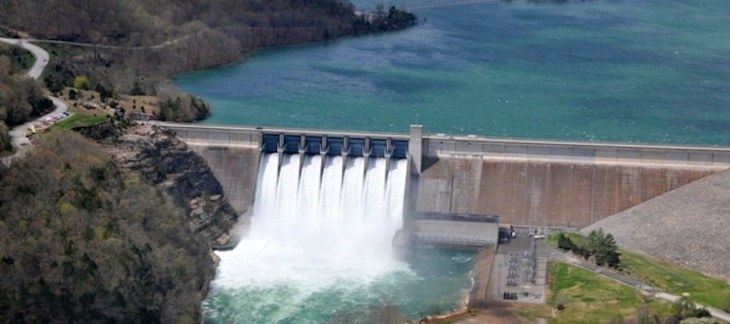Fayetteville embraces new wastewater treatment technology
by June 19, 2017 5:34 pm 1,023 views

Officials with the city of Fayetteville recently showed off what they believe is the future of wastewater treatment technology.
The city in early June held a ribbon cutting and gave tours at the Paul R. Noland Wastewater Treatment Plant of an upgraded disinfection system that more effectively and efficiently treats the city’s wastewater before it is discharged back into the White River.
It’s called HyDOZ, and was built with proprietary technology developed by Fayetteville water technology firm BlueInGreen. The system uses ozone to disinfect treated effluent, or discharge. BlueInGreen also touted other additional benefits, including the removal of so-called contaminants of emerging concern (CECs), increasing dissolved oxygen and increasing the clarity of treated water.
BlueInGreen — along with project partners Pinnacle Ozone Solutions LLC of Florida and PCI Inc. of California — announced a partnership in November 2014 (pilot testing began in 2012) with the city of Fayetteville to provide the HyDOZ system. The city’s one-time capital purchase of the system, authorized by Mayor Lioneld Jordan, was $1.78 million.
Construction and installation of the system was completed about a year ago, and Fayetteville is the only city in Arkansas using ozone to treat its wastewater, as opposed to ultraviolet (UV) disinfection. After several months of monitoring data since the new system was installed, Fayetteville utilities director Tim Nyander says the city’s expectations have been met, and it was time to celebrate the upgrade.
“It’s working as well or better than the former disinfection unit,” said Nyander, who worked with David Jurgens for about a year before succeeding him when Jurgens went to Chesapeake, Va., in 2015. Nyander had previously worked for Joplin, Mo., for 30 years. “At the same time, the effluent is clearer, there’s less chance of odor. It’s working great. The main thing is that we are prepared for the future.”
FORWARD THINKING
BlueInGreen CEO Chris Milligan said disinfection is the last step of wastewater treatment before the effluent is discharged into the White River.
“And that river, as you may know, runs into Beaver Lake,” said Milligan, who joined the company in 2012 and was promoted to CEO last year. “So this is important not only for the people floating down the White River, but for all of us who are drinking water out of Beaver Lake.”
Milligan said ozone will not only kill the basic contaminants (E.coli, fecal contaminants), it will be more effective than UV at reducing contaminants of emerging concern. CECs, according to a definition from the U.S. Geological Survey (USGS), are “any synthetic or naturally occurring chemical or any microorganism that is not commonly monitored in the environment but has the potential to enter the environment and cause known or suspected adverse ecological and/or human health effects. In some cases, release of emerging chemical or microbial contaminants to the environment has likely occurred for a long time, but may not have been recognized until new detection methods were developed. In other cases, synthesis of new chemicals or changes in use and disposal of existing chemicals can create new sources of emerging contaminants.”
In other words, Milligan said, substances like birth control pills, painkillers or other pharmaceuticals that enter a water source because of their widespread use, which could have an effect on the environment or human health. Federal and state regulations for CECs do not exist for wastewater treatment plants, so they aren’t required to apply them.
That could and will likely change, Milligan said. If it does, the Noland Plant will be ready.
“CECs are really big on the regulatory radar right now,” Milligan said. “The UV disinfection was very effective at the disinfection side of things, but relatively ineffective at [CEC] removal. So that was part of the reason for the whole pilot test with the city of Fayetteville. Before they spent the money to improve their UV system, it was more forward thinking to spend taxpayer money with an eye on the future and be able to address the potential for increased regulations and be able to protect water quality in Northwest Arkansas.”
